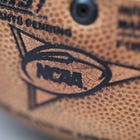
Judge Claudia Wilken granted preliminary approval to the over $2 billion House v. NCAA settlement on Monday, October 7, allowing the settlement to move forward.
The approval comes one month after the initial hearing had Judge Wilken send both sides back to the drawing board due to some confusing clauses in the settlement.
This doesn’t mean that the rules laid out in House are in effect yet, but getting the approval from Wilken was a necessary first step to allowing things like direct athlete compensation.
What changed?
As I discussed in early September, most of Wilken’s reported objections came from minor points in the settlement like the language used, such as definitions for “boosters,” “pay-for-play” and more. Those weren’t big hiccups, despite some grandstanding by both NCAA and plaintiff lawyers, so most expected the sides to come to clarifying terms.
Judge Wilken didn’t give any comments on her preliminary approval, so we don’t know much about what went on in the courtroom. That’s better than the confusion that was reported last time around.
It’s even better that both sides appear to be happy with the resolution.
“We are pleased that we are one stop closer to a revolutionary change in college athletics that will allow billions in revenue sharing,” said one of the lead plaintiff attorneys, Steve Berman.
“We are thrilled by Judge Wilken’s decision to give preliminary approval to the landmark settlement that will help bring stability and sustainablility to student-athletes for years to come,” said NCAA president Charlie Baker in a statement to press. “Today’s progress is a significant step in writing the next chapter for the future of college sports.”
More on House v. NCAA:
What all does this cover?
This is a massive settlement that will dramatically reshape college athletics. There’s no way around that. There’s also been more terms and conditions of the settlement leaked out since it was agreed upon, so let’s recap the biggest points here:
$2.78 billion in backpaid money to former and current college athletes dating back to 2016 for NIL-related television rights
Allowing direct payment from school athletic departments to student-athletes, with an expected cap of roughly $20 million per ESPN.
Elimination of scholarship roster caps, meaning teams can offer as many full and partial scholarships as they’d like
And that’s all on the side of athletes getting more money. There’s also some added benefits that the NCAA is very happy to see in the settlement:
The NCAA and power conferences can now create a “designated enforcement agency” to actually enforce rules against pay-for-play NIL deals, per The Athletic.
All Power Five schools - including the PAC-12 - are bound to the NCAA through the settlement, which may prevent them from breaking off like many have speculated the main teams would.
So what’s next?
Unlike the last times we’ve discussed House v. NCAA, we actually have a timeline now of what will come next. This preliminary approval was the first hurdle, but with that cleared, now the settlement can progress towards actually taking affect.
October 18 - Former players will be notified of the decision and a claims period will begin.
60 Days After Notice (estimated December 17) - Final projected amount of payouts will be publicly distributed. It will likely come in around that $2.78 billion number, but could vary slightly based on the amount of athletes that opt-in and other considerations like Title IX that haven’t quite been hammered out yet.
105 Days After Notice (estimated January 31, 2025) - Window for claims for compensation, opting out and filing objections closes
April 7, 2025 - Men’s NCAA Basketball Championship game and the final hearing for approval. If the settlement is fully approved, it will immediately go into affect.
This is going to move quick, especially for as big of a change as it is. Judge Wilken’s approval document states that the final court “will likely be able tot approve the Settlement as fair, reasonable and adequate,” per The Athletic, which bodes well for the final approval. This is going to happen.
But how is that going to affect everything in college athletics? We don’t really know yet. I expect we’ll see a lot of programs look at creative ways to increase their cash flow to account for the up to $20 million annualy they’ll have to pay athletes. Just look at Tennessee, who added a 10 percent talent fee to season ticket packages to help directly pay the athletes under the proposed settlement. I think we’ll see a lot more school looking into routes like that.
The most interesting part to me - and to be clear, this is fully and completely speculation on my part - is the FBS/FCS divide.
Historically, the reason the two subdivisions split is because of budgetary reasons. The FCS schools either couldn’t keep up with the FBS’s spending or simply didn’t want to. We see that in the main difference between the two subdivisions - scholarship caps. The FBS currently operates at a 85 scholarship maximum for their football programs, while the FCS has a much lower 63 cap.
But the House settlement is getting rid of scholarship caps. So where does that leave us? In all honesty, I don’t know. But I do know this - the FBS/FCS split is the only subdivision divide in Division I athletics. I could see it weathering away.
That’s not to say the Big Sky is coming for the PAC-12. In fact, I think it’s incredibly unlikely that the two subdivisions merge. While it’s true the FBS put on a $5 million entry fee for teams looking to move up - that’s what makes the PAC-12 or Mountain West adding any of the Montana or Dakotas schools a virtual impossibility - that came well before House entered the forefront and eliminating scholarship caps entered the conversation.
I’m not saying this is something that’s happening. But I do think it’s something to watch and is a section of this rapidly intensifying settlement that should be considered.
What I’m Reading:
: Three-Point Stance is your favorite independent college football newsletter. Come for in-depth analysis and bold commentary, stay for the jokes and memes. An idea hatched after years of 12-hour days glued to the couch, Tyler Schuster puts his passion for the sport on full display, delivering big-picture ideas, weekly previews and gambling nuggets directly to your inbox.An idea hatched after years of 12-hour days glued to the couch, Tyler Schuster puts his passion for the sport on full display, delivering big-picture ideas, weekly previews and gambling nuggets directly to your inbox.
CERNIG by
: Playoff baseball is here and Colin’s the one I’m trusting to keep me covered! If you don’t know, I love baseball too, and Colin’s been putting out some great work about players around the league. He writes for Yardbarker a lot, but the content is easy to find on CERNIG and super engaging. by , , and : You can't beat Alex, Richard and Godfrey. They're on the front lines breaking news and creating the best content in the game. I 100 percent recommend SZD for anyone into college football and Steven Godfrey hating your team. They’re mostly a podcast publication, but sometimes being able to listen to three well-informed guys talking about college football is what you need in your life.Have any questions, ideas, article pitches, or information? With the new Substack features, you can directly message me! Hit the button below to send me a message, or reach out via email to sidsports23@gmail.com, or find us on your favorite social media platform like Facebook, Instagram, Twitter, Substack Notes and Bluesky.








Whoa. No kore cap on scholarships is wild. That doesn’t mean they can increase the actual roster count to whatever they want though, right?